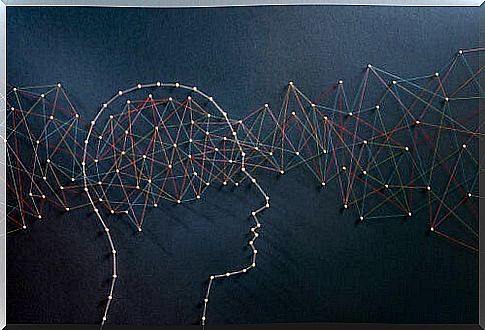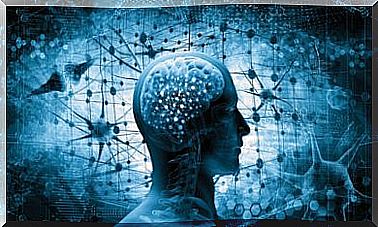Sometimes Thinking Differently Is Living Better

Sometimes we entrench ourselves in our iron-clad mental focuses like stubborn, unyielding soldiers. Thus, and almost without realizing it, we stop finding solutions to our problems, remedies to disappointments and perspectives in the face of daily challenges. Thinking differently is not easy, it is true, but sometimes it can mean the difference between well-being and suffering.
Now, what really prevents us from thinking in a more agile, original and even healthy way? One of the most prominent figures in the field of psychology who investigated this topic was Abraham Luchins.
In 1942, he published an experiment entitled “Water Jug Problem” with which he showed that our main problems are mental rigidity, prejudice and even fear.
We are afraid to innovate. Not only do we tend to be somewhat insecure when it comes to changing behaviors and introducing new features into our routine. One of our pending accounts is to rethink approaches, deactivate old inherited thought patterns or even more to detect those defense mechanisms that we apply on a daily basis and of which we are not usually aware.
As Luchins pointed out, the strategy to improve these realities would be neither more nor less than to make use of a more flexible thinking to be able to adapt to a constantly changing and increasingly demanding environment. Let’s delve into this topic.

Think differently to live better, how to do it?
We all have the ability to perceive the same things: the sound of an approaching storm, the smell of wet earth, the rain hitting the windows …
Now, despite the fact that we perceive the same stimuli, each person interprets them in a way: according to their experience, personality, education, environment, mood, preferences, aversions, etc.
Thus, while some are uncomfortable with the proximity of a storm, others enjoy it instead. In this there is no major problem, each one of us has particularities that allow us to filter and understand reality in one way or another.
The central issue is that, at times, that particular way of processing what surrounds us and what happens passes through the tapestry of negativity, defenselessness and that mental rigidity where we see only darkness in the tunnel.
How can we start to think differently to feel better? How to do it, if our thoughts arise automatically and in many cases mediated by our emotions? Let’s see some keys.
The elastic mind
Dr. Abraham Luchins already anticipated in the 1940s the need to develop another type of mental approach. One that allows us to survive and react to a changing environment full of stimuli.
Leonard Mlodinow, renowned physicist and mathematician, introduced a few years ago a concept of great interest to the field of psychology: we speak of the “elastic mind”.
Mlodinow collaborated with Stephen Hawking on several of his books and to this day, he is one of the most interesting scientific popularizers. His contribution to the so-called elastic mind is a direct invitation to think differently and not just to live better. Also to contribute to our happiness and even to the progress of society.
This idea is based on the following pillars:
- We must stop taking things for granted. Comfortable ideas make us sleepy. It is time to apply a critical look, sharp and capable of not being left with easy answers.
- It is also time to start doing something that costs us a lot: tolerate ambiguity, uncertainty and even contradiction.
- We need to rise beyond the more conventional mindsets.
- You have to trust both logic and lateral thinking, the one that dares to innovate.
Elastic thinking does not fear the new and accepts uncertainty. You know and understand that changes are constant and that you not only have to adapt to them, you have to take advantage of them.

Thinking differently forces us to detect useless thoughts in order to “see” better
Think different to live better. Think flexibly to respond effectively to day-to-day challenges.
We’d all love to apply this kind of healthy elastic mind approach in order to respond more innovatively to the future ahead. However, yes, there is another aspect that we should take into account.
In our minds are integrated a myriad of unhelpful and even harmful thoughts. We mean those who fuel negative self-talk. The same ones who tell us things like ” I’m useless, I’m not going to get over this”, “things are going to get worse and worse and there’s nothing to do”, “what I should do is not take risks, stay in my zone of comfort, etc “.
If we sanitize that flow of limiting thoughts that are installed in our mental palace, the internal dialogue will be much healthier, even more enriching. Only then will we allow ourselves to think differently by leaving room for that elastic mind capable of seeing valuable opportunities in changes.
Also the mind and the brain must stay in the vanguard, updated before the new times. Something like this requires constant work and a firm commitment to ourselves. Let’s get started.









